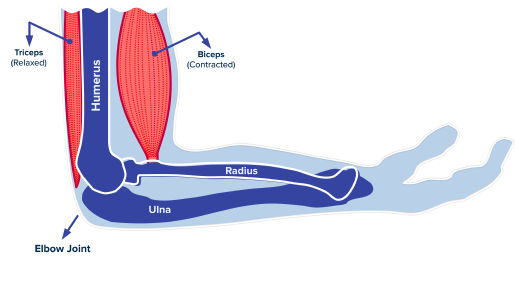About Elbow
“Elbow disorders and injuries can range from minor to severe and affect people of all ages.”
The elbow is a joint that connects the upper arm bone (humerus) to the two bones in the forearm (ulna and radius). It is a hinge joint that allows the arm to move in a flexion and extension motion. The elbow is also responsible for rotating the arm and hand, which allows us to perform various daily activities such as writing, cooking, and playing sports.
However, the elbow is also prone to various disorders and injuries, which can cause pain, discomfort, and difficulty performing daily activities. In this article, we will discuss three common types of elbow disorders and injuries: fractures and dislocations, osteoarthritis, and soft tissue injuries.

Fractures and Dislocations
Fractures and dislocations are common injuries that occur when there is a break or displacement in the bones of the elbow. Fractures can range from simple cracks in the bone to more severe breaks that require surgical intervention. Dislocations occur when the elbow bones are out of place, which can cause pain, swelling, and difficulty moving the arm.
Symptoms of fractures and dislocations include:

Figure: Xrays of elbow fracture dislocations. #1 shows the break in the radius. #2 shows the break in the ulna. #3 shows the elbow joint completely out of place, or dislocated.
Osteoarthritis
Osteoarthritis is a degenerative joint disease that causes the cartilage in the elbow joint to wear down over time. Cartilage is a tough, flexible tissue that cushions the bones and allows them to move smoothly. When the cartilage wears down, the bones may rub against each other, causing pain and stiffness.
Symptoms of osteoarthritis include:
Soft Tissue Injuries
Soft tissue injuries refer to injuries that affect the muscles, tendons, and ligaments around the elbow joint. These injuries can be caused by a sudden impact, such as a fall or a blow to the elbow, or they can occur gradually over time due to overuse or repetitive stress.
Symptoms of soft tissue injuries include:
Elbow disorders and injuries can range from minor to severe and affect people of all ages. It is important to seek medical attention for any elbow pain or injury. Early diagnosis and treatment can help prevent further damage and ensure a quicker recovery and return to normal activities.
It is also important to take preventive measures to reduce the risk of elbow disorders and injuries, such as warming up before participating in physical activities, using proper technique when lifting heavy objects, and taking breaks to rest and stretch during repetitive activities.
If you are experiencing elbow pain or have sustained an elbow injury, it is important to consult a medical professional for a proper diagnosis and treatment plan.
The Orthopaedic & Spine department at our hospital can provide the necessary resources and expertise to help you manage your elbow disorder or injury and get you on the road to recovery.

